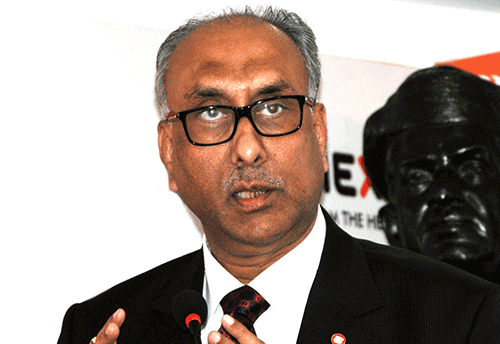Priority sector activity should not remain confined to being a mere data collection exercise: Mundra
Updated: Jul 17, 2017 06:39:24am

Priority sector activity should not remain confined to being a mere data collection exercise: Mundra
Pune, July 17 (KNN) The priority sector activity should not remain confined to being a mere data collection exercise, stressed RBI Deputy Governor SS Mundra highlighting the necessity for all the verticals under Priority Sector to evolve within themselves and be brought together as a cohesive group, prepare a strategy and then be taken to the Board for broader discussion and guidance.
Mundra said this while addressing the ”Conference on Credit flow to Priority Sector – Policy and Implementation” held at College of Agricultural Banking, Pune recently.
He said there are economic reasons why some sectors/borrowers do not receive adequate finance.
“At any given point of time, the lendable resources at institutions are limited and there is always a trade-off between how much time and effort can be put in and what kind of topline and bottom line the new businesses would generate,” Mundra added.
Given this sort of business dynamics, it is possible that the sectors which rightly deserve bank credit get excluded. This is precisely the motivation behind institution of priority sector lending norms. These guidelines are revised from time to time keeping in view the developments in the economy, he said.
Mundra said “in the last few years we have seen over exposure of banking system to large corporates and consequences thereof. The excessive lending to corporate sector was the outcome of what I call “least input and maximum output” approach.”
With little effort one could create large credit volumes whereas creating similar volumes in the priority sector would have required commitment of larger resources in terms of branch staff and operating people.
There is another dimension to why focusing on smaller loans would become all the more necessary now and that is the regulatory aspect.
Couple of noteworthy changes have happened in the recent past (i) there is a revision of single and group borrower exposure limit (ii) an overall ceiling on exposure of an entity to the banking system has been mandated. These developments would push the corporates to gradually shift to markets for meeting their funding requirements.
“Apart from bitter experience of the past and need for risk diversification, earning potential presented by priority sector lending is another reason why banks should look elsewhere for better business opportunities,” Mundra said.
On low cost credit delivery through technology, the RBI Deputy Governor said, “what you need to bear in mind is that the small and marginal farmer, micro enterprises, affordable housing very well become half or more than half of the priority sector.”
However, if this segment is to be served profitably, it can only be done with intense use of technology and therefore, banks need to have low cost delivery model. Quite a few banks both from public and private sector have developed technology-based low cost credit delivery models and are doing quite well, he said.












